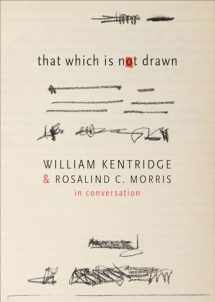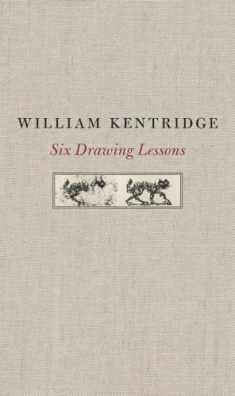
That Which Is Not Drawn: In Conversation (The Africa List)
ISBN-13:
9780857424457
ISBN-10:
0857424459
Edition:
Reprint
Author:
Rosalind C. Morris, William Kentridge
Publication date:
2017
Publisher:
Seagull Books
Format:
Paperback
200 pages
Category:
Criticism
,
Arts History & Criticism
FREE US shipping
Book details
ISBN-13:
9780857424457
ISBN-10:
0857424459
Edition:
Reprint
Author:
Rosalind C. Morris, William Kentridge
Publication date:
2017
Publisher:
Seagull Books
Format:
Paperback
200 pages
Category:
Criticism
,
Arts History & Criticism
Summary
That Which Is Not Drawn: In Conversation (The Africa List) (ISBN-13: 9780857424457 and ISBN-10: 0857424459), written by authors
Rosalind C. Morris, William Kentridge, was published by Seagull Books in 2017.
With an overall rating of 3.9 stars, it's a notable title among other
Criticism
(Arts History & Criticism) books. You can easily purchase or rent That Which Is Not Drawn: In Conversation (The Africa List) (Paperback) from BooksRun,
along with many other new and used
Criticism
books
and textbooks.
And, if you're looking to sell your copy, our current buyback offer is $0.3.
Description
For more than three decades, artist William Kentridge has explored in his work the nature of subjectivity, the possibilities of revolution, the Enlightenment’s legacy in Africa, and the nature of time itself. At the same time, his creative work has stretched the boundaries of the very media he employs. Though his pieces have allowed viewers to encounter the traditions of landscape and self-portraiture, the limits of representation and the possibilities for animated drawing, and the labor of art, no guide to understanding the full scope of his art has been available until now. For five days, Kentridge sat with Rosalind C. Morris to talk about his work. The result—That Which Is Not Drawn—is a wide-ranging conversation and deep investigation into the artist’s techniques and into the psychic and philosophical underpinnings of his body of work. In these pages, Kentridge explains the key concerns of his art, including the virtues of bastardy, the ethics of provisionality, the nature of translation and the activity of the viewer. And together, Kentridge and Morris trace the migration of images across his works and consider the possibilities for a revolutionary art that remains committed to its own transformation. “That’s the thing about a conversation,” Kentridge reflects. “The activity and the performance, whether it’s the performance of drawing or the performance of speech and conversation, is also the engine for new thoughts to happen. It’s not just a report of something you know.” And here, in this engaging dialogue, we at last have a guide to the continually exciting, continually changing work of one of our greatest living artists.


We would LOVE it if you could help us and other readers by reviewing the book
Book review

Congratulations! We have received your book review.
{user}
{createdAt}
by {truncated_author}




